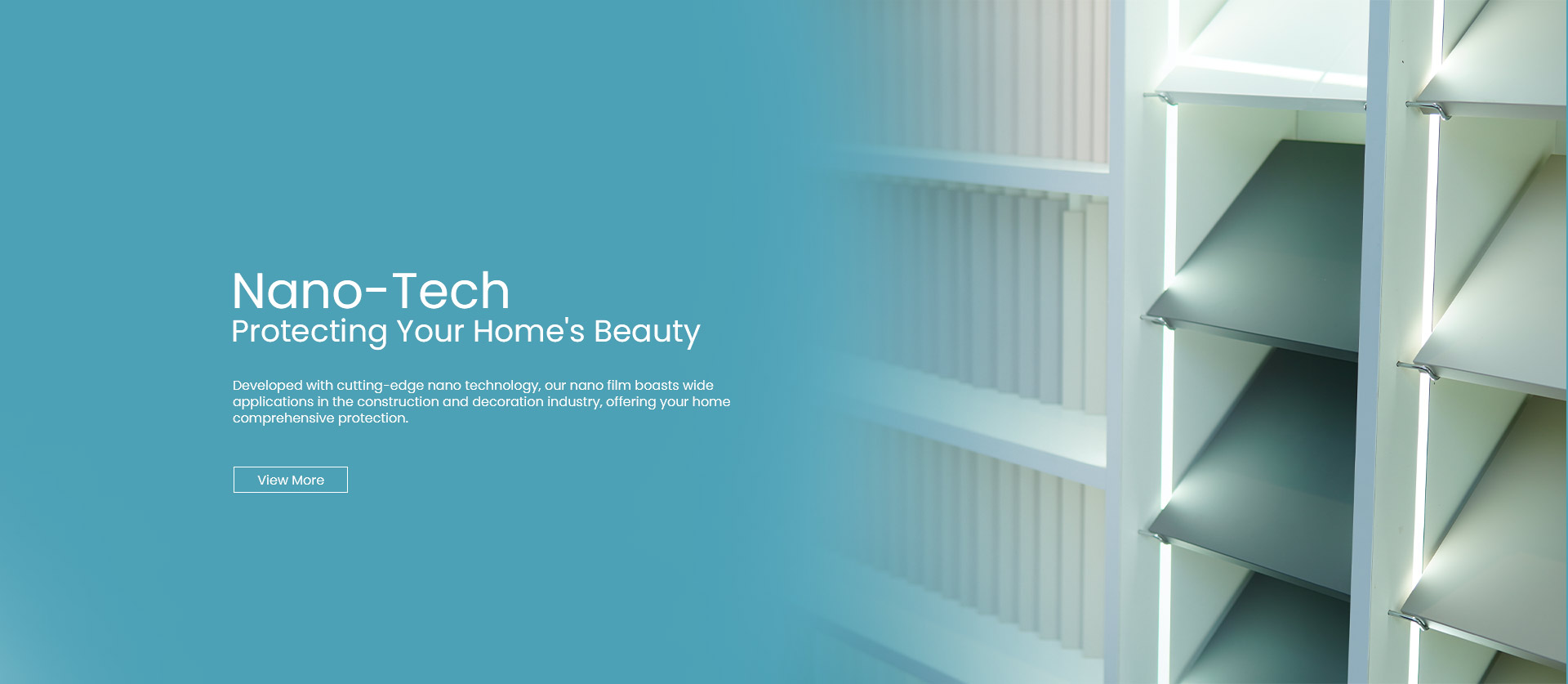Considerations for Customizing Nanofilm Styles
nanofilms have become widely applicable in the realm of high-end customization for home and commercial decorative materials, including flooring, wall panels, ceilings, wooden doors, aluminum honeycomb panels, and more. These versatile films can adapt to various architectural surfaces, allowing for a seamless blend of practicality and aesthetic appeal. When customizing nanofilm styles, several key considerations ensure the successful integration of functionality and visual appeal in commercial applications.
1. Surface Compatibility:
Ensure that the chosen nanofilm style is compatible with the surface material of the decorative element. Different substrates may have varying adhesion properties, and selecting a nanofilm tailored to the specific surface enhances durability and longevity.
2. Architectural Harmony:
Consider the overall design and architectural style of the space or element being decorated. The nanofilm style should harmonize with the existing or planned aesthetics, contributing to a cohesive and visually pleasing environment.
3. Color Palette Selection:
Carefully choose the color palette of the nanofilm to complement the overall color scheme of the space. Whether harmonizing with existing tones or introducing contrast, a well-thought-out color selection ensures the nanofilm becomes an integral part of the design.
4. Texture and Finish Options:
Explore the variety of textures and finishes available for nanofilms. Depending on the desired effect, one can opt for matte, glossy, textured, or even specialty finishes. The choice of texture contributes significantly to the tactile and visual experience of the decorated surface.
5. Pattern Customization:
Customize nanofilm patterns to align with the design theme. Whether replicating natural wood grains, abstract designs, or intricate motifs, tailoring patterns allows for a unique and personalized touch in high-end customization.
6. Durability and Maintenance:
Prioritize the durability and ease of maintenance when selecting nanofilm styles. Considering the intended use and foot traffic, opt for nanofilms that offer superior resistance to wear, scratches, and stains, ensuring a long-lasting and easy-to-maintain decorative solution.
7. Environmental Considerations:
Be mindful of the environmental impact of the chosen nanofilm. Opt for products that adhere to eco-friendly standards and consider the sustainability of materials used in the manufacturing process.
8. Application Techniques:
Understand the application techniques required for the chosen nanofilm style. Whether utilizing adhesive application, heat bonding, or other methods, ensuring compatibility with the intended surface is essential for a seamless and professional finish.
9. Customization for Shape and Form:
Given the adaptability of nanofilms to various shapes, explore customization options for irregular or uniquely shaped architectural elements. This flexibility allows for the incorporation of nanofilms on surfaces with diverse contours and configurations.
10. Testing and Prototyping:
Before committing to a large-scale application, conduct testing and prototyping. This step helps validate the chosen nanofilm style's performance, appearance, and adherence to the desired design vision.
Customizing nanofilm styles for high-end decorative materials involves a thoughtful and multidimensional approach. By considering surface compatibility, architectural harmony, color palette, texture, pattern, durability, environmental impact, application techniques, and adaptability to diverse shapes, designers and architects can achieve a harmonious fusion of practicality and aesthetics in commercial spaces.


